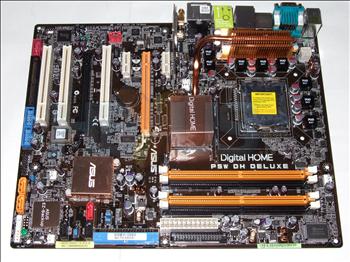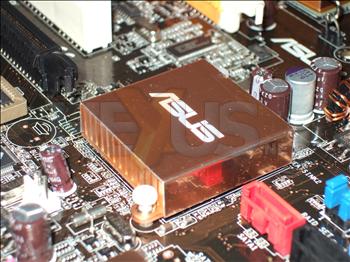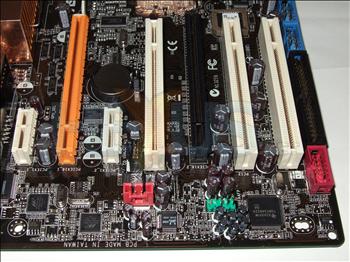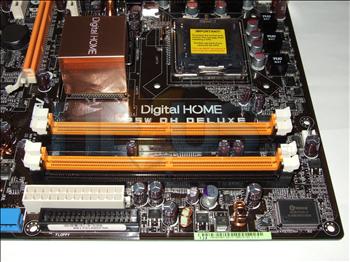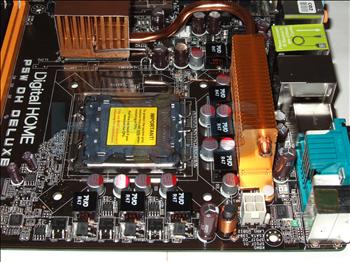Layout and features
We often wonder if manufacturers have a competition to see who can fit the most colours of the rainbow on their boards, but with more people going down the self-build route, it can become a benefit. Manuals can simply refer to a x16 PCI-express slot as “the orange one in the middle”, greatly simplifying a system build for a newcomer.
Click on the pictures for a larger shot.
ASUS seems to follow a proven layout formula, with not a lot changing from board to board.
Motherboard manufacturers are increasingly spending more time on making their products look attractive as well as functional. With the two main heatsinks being covered by a highly polished copper case, it will not look out of place in any chassis with a side window.
Further, with a copper case covering 2 sides and the top of the northbridge, the air that is blown by the CPU fan will be forced over the fins of the heatsink. The finned heatsink behind the I/O port also gets the same treatment from the CPU's cooling fan. In addition, being directly below the case's rear fan ensures that this passive solution gets the airflow it needs.
Keeping this a passive design has required the use of a heatpipe to ferry the heat away from the memory controller hub.
Heat generated from a southbridge is small in comparison to its compatriot up north. The standard airflow through the case will be enough to keep it cool, we reckon.
Thankfully, ASUS has noted the lack of PCIe x1 cards on the market at the moment and has provided 3 standard PCI slots. Keep in mind that a number of CrossFire solutions will be using dual-slot coolers, so a PCIe x1 and a standard PCI slot will be 'lost', effectively. Loosing the functionality of motherboard slots has become commonplace with multi-GPU systems, though.
Should you need 8GiB of RAM you won't have any issues here. Slots are colour-coded as we have come to expect. These signify which are to be used in a Dual DDR2 configuration.
Placement of the ATX power header could have been a tad higher, but we have certainly seen worse positions on a board. It's nothing a bit of careful cable bending can't manage.
The blue socket to the left of the floppy port is a standard 4-pin molex connection that's required for the board to operate. Being on the edge of the board and at a 90 degree angle, it poses no problems.
Plenty of room around the CPU area makes installing a HSF easy; just spend a little time making sure that you don't catch the passive heatsink next to it and bend the fins.
All past and present LGA775 processors are supported, with ASUS also claiming support for Intel's next-generation (Kentsfield) multi-core CPUs. As soon as we have one in our labs, we'll be sure to report back.






